Debut of Nikon F5
- Debut of Nikon F5
- Specifications allowing both speedup and reliability
- Responses to F5
- 50th Anniversary Model of Nikon F5
- Carried into space by the NASA space shuttles
- Awards granted to F5
Debut of Nikon F5
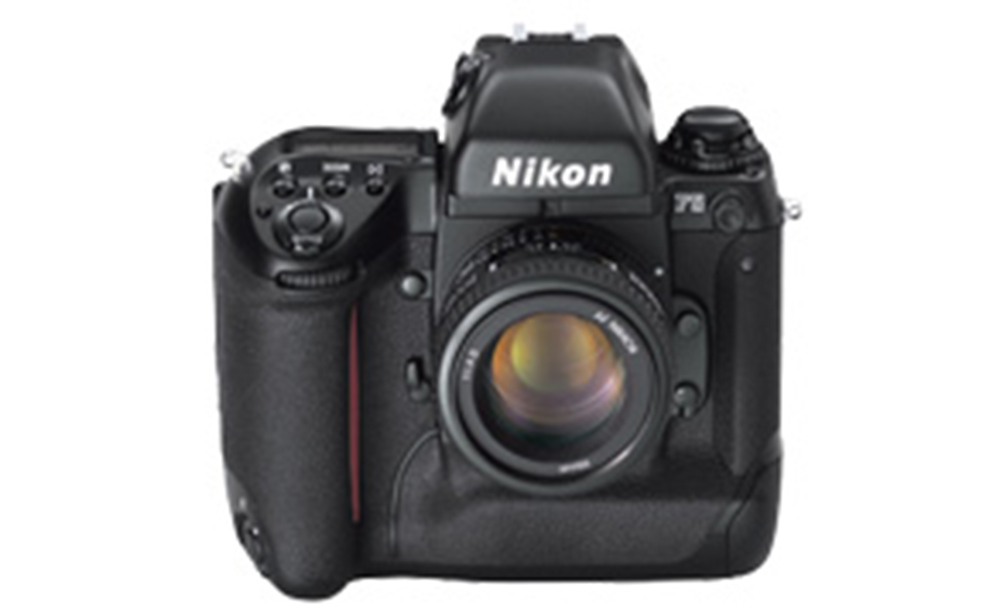
Nikon F5 was placed on the market October 1996 with the catchword of " The new standard in professional photography", at 325,000 yen (consumption tax excluded) for the body. It was the flagship single-lens reflex (SLR) camera marking the fifth of the "single-digit F-series models" developed since the Nikon F was launched in 1959 based on the basic philosophy, to offer more improved systems and basic functions, in addition to a camera robust enough for professional use. It had been eight years after the release of the predecessor Nikon F4 in 1988.
The high-end SLR cameras Nikon F, F2, F3 and F4 known as "single-digit F-series models" were developed based on the basic concept of offering mechanisms and technologies already adopted and proven in consumer cameras in a more sophisticated manner. However, the F5 was developed placing emphasis on professional use as the primary aim, in order to provide a flagship camera for the 21st century. Therefore, the F5 was designed to be a "new dimension" camera with highly flexible specifications by actively incorporating a variety of technological innovations with the capabilities required by professionals to achieve sophisticated image expressions.
The development of the F5 progressed under the slogan of "What to do with a camera to speed every operation as a tool to take photos", keeping in mind the performance of the then-current competitors' models. The slogan is the basic concept of F5 leading to the subsequent keyword of "Speed." The F5 development project was started with the introduction of the F4 to the market, but the element technology survey and development based on the concept started around 1992. In 1993, about one year after the start of survey and development, drawings were drafted and individual elements were trial-manufactured. Three additional years were required to bring the camera nearer to actualization, and the camera was successfully placed on the market in 1996.
Specifications allowing both speedup and reliability
The main features of the F5 are individually described below.
1. High-speed, high-precision Autofocus (AF) system with five focusing areas
The AF system includes five focusing areas based on the distance-measuring element Multi-CAM1300 Autofocus Sensor Module developed newly for F5. A bank of three (3) cross-ranged sensors arranged in a row contain a dual sensor to ensure high detectability even under such low light intensity conditions as EV-1 (ISO 100), through proper use depending on the subject brightness. In addition, more than 1,300 distance-measuring elements are densely configured into five separate sensors, which help to accurately detect the in-focus condition even in the fine details of the subject.
In addition, the Dynamic AF Mode is also incorporated to track the subject, and attain and maintain proper focus with full use of all of the five focusing areas. This mode brings the moving subject in the first selected focusing area into focus, and continues focus tracking based on the information from the other focusing areas if the subject moves out of the selected focusing area. This is very effective when tracking and shooting any irregularly moving subject.
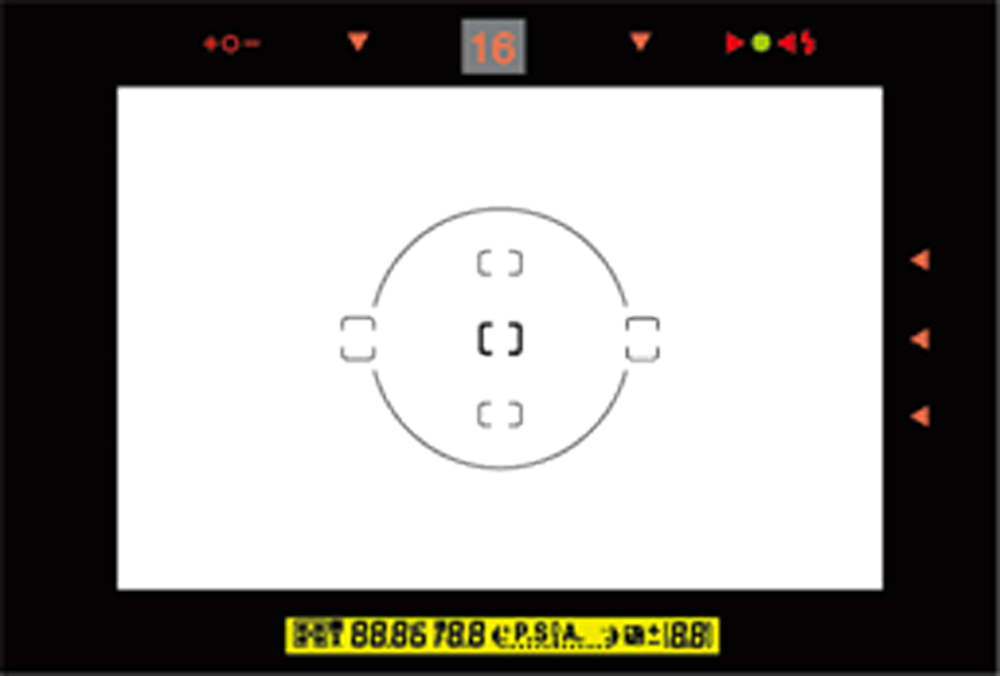
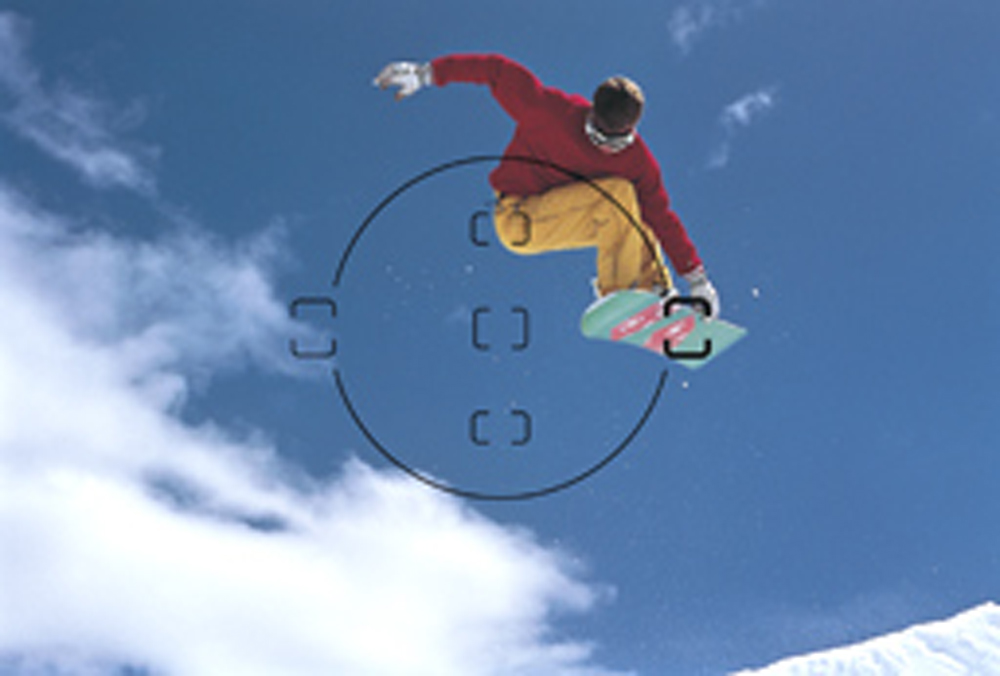
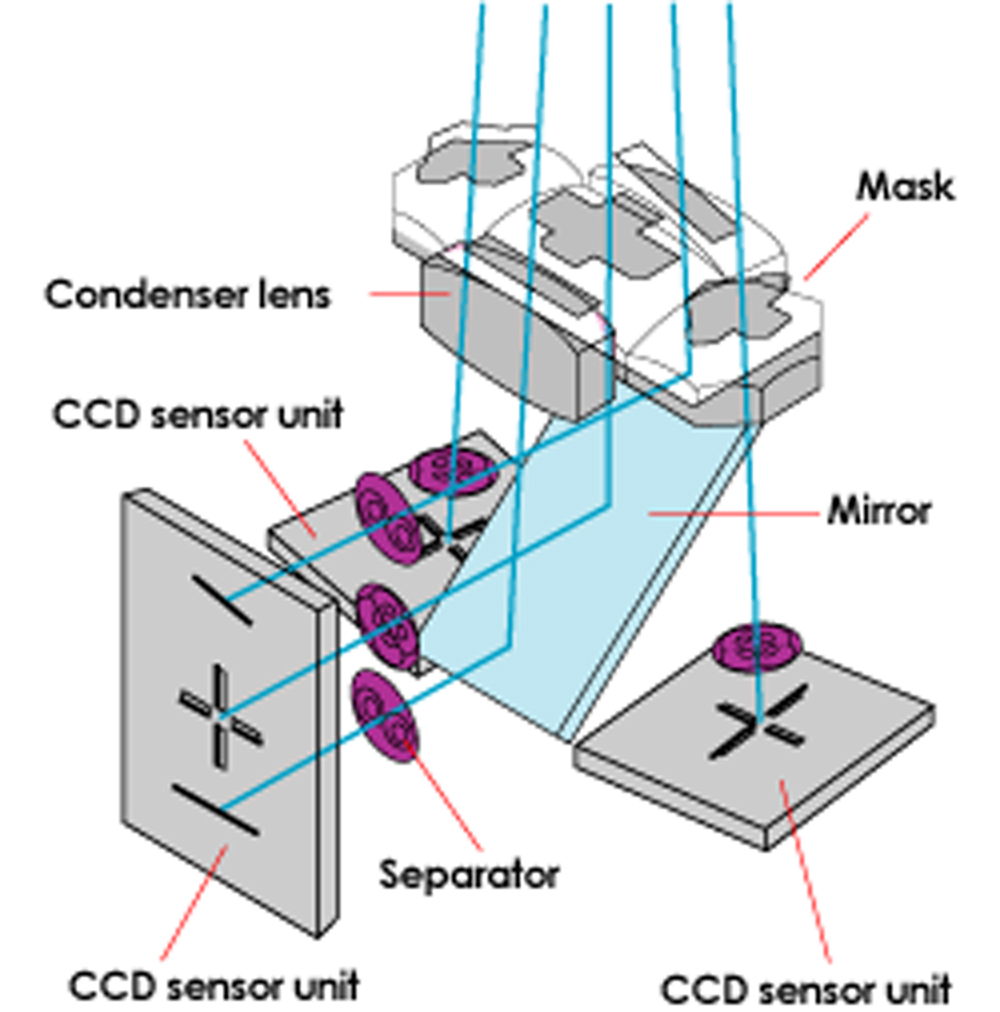
2. Exposure measurement system "3D Color Matrix Metering" based on the newly developed metering elements
Thirteen (13) years after the introduction of Nikon FA, which incorporated the Matrix Metering system to provide proper exposure even in complicated lighting conditions, the exposure metering system in the Nikon F5 adopted the 1,005 (-pixels) CCD metering elements with the world's first R (red), G (green) and B (blue) filters, which changed the concept of Matrix Metering systems. The metering system called "3D-Color Matrix Metering" was a revolutionary new technology, using the color tone of the subject as one of the factors for proper exposure in addition to the brightness and contrast, and the information about distance obtained from the lenses. This contributed to photographic images that more closely resembled what we see especially under fluorescent or tungsten lamp lighting, or in such conditions where yellow, green and blue account for the greater part of the projected area.
As digital cameras are predominant these days, White Balance and Color Balance for cameras to capture the tone of the subject have become common concepts. However, in view of the fact that in 1996, when digital cameras were a novelty, the F5 incorporated the exposure metering system taking into account the tone of the subject, demonstrating that F5 was highly advanced.
Three exposure metering modes are available, depending on the photographic purpose and/or the subject conditions: 3D-Color Matrix Metering, Center-Weighted Metering, and Spot Metering.
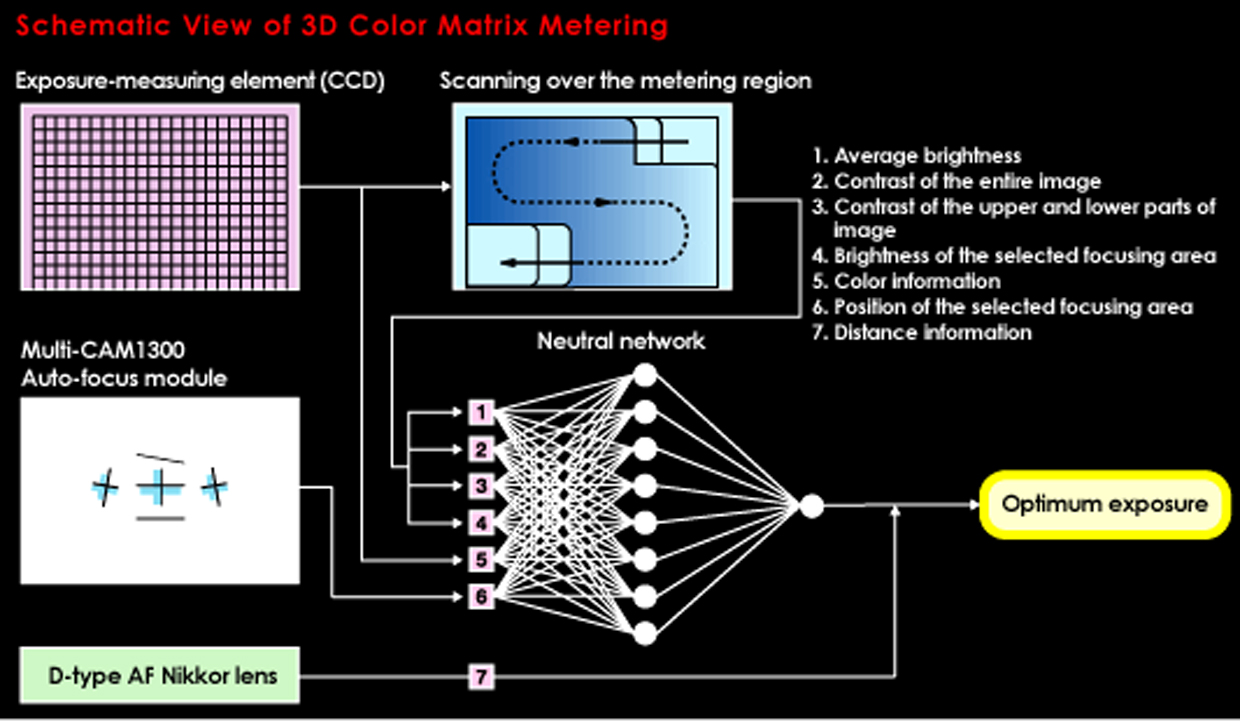
3. Motor drive achieving high-speed film advance and rewind
The F5 is configured with a motor drive to attain a high-speed film advance of up to 8 frames per second (fps) (when used with the dedicated Ni-MH Battery Unit MN-30 in the AF-C mode at a shutter speed of 1/250 sec. or more), and a film rewind that takes approx. 4 seconds per 36-exposure roll. The F4 evolved into the variations F4E and F4S depending on the type of power source, however, the F5 did not give rise to any variation series since it was designed with the battery holder integrated with the body.
In addition, in order to allow the AF to accurately follow the film advance of up to 8 fps, a variety of design ideas were incorporated. One of them included the Mirror Balancer. In the catalogs of those days, the operating principle of the Mirror Balancer was illustrated by the "movement of a swinging pendulum." This mechanism helped achieve high-speed AF and consistently well-balanced viewfinder images despite its high-speed motor drive.
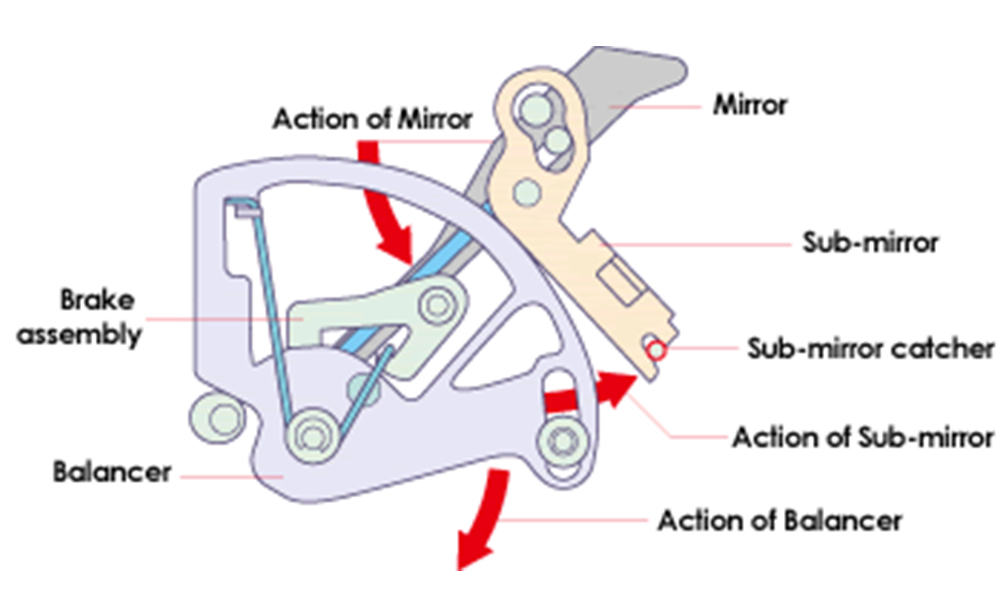
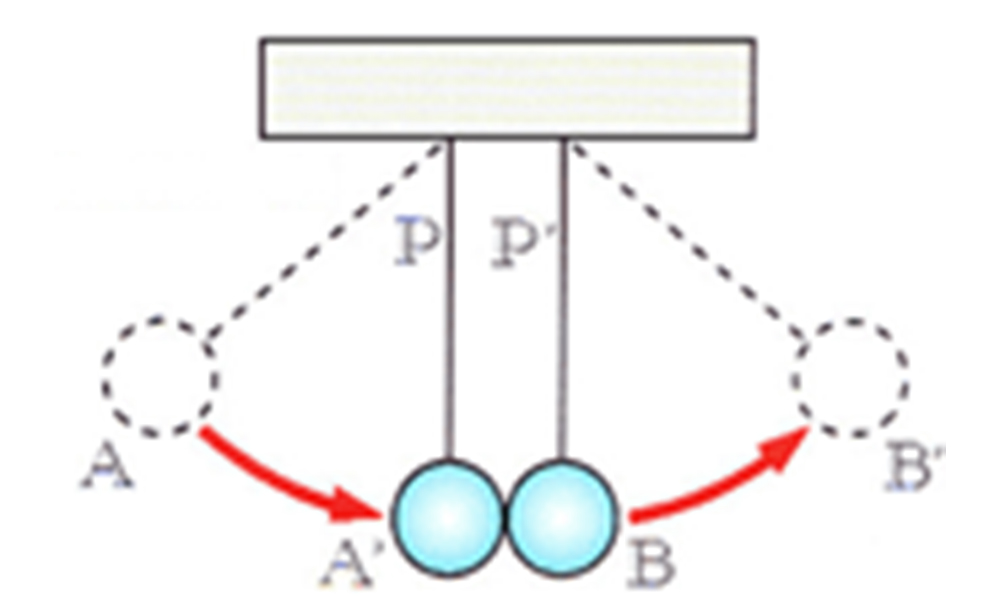
As seen in the illustration, when pendulum P swings down from position A to position A' to strike pendulum P', pendulum P instantly stops at A' while pendulum P' swings up from B to B'. A newly developed impact-absorbing balancer based on the principle of the pendulum swing was adopted in the main mirror for F5. The mirror, swinging down after the shutter release button is pressed, is caught by the balancer which has nearly the same inertial mass as the mirror; the balancer absorbs the impact resulting from the swing-down action and causes the mirror to stop consistently. After absorbing the impact, the balancer is set to stop with the aid of a special brake mechanism independently from the mirror. In addition, the sub-mirror is also equipped with a mechanism that minimizes the shock that may occur during the mirror-down action. These mechanisms help suppress possible vibration while the shutter release button is being pressed, ensuring silent operation and reducing image extinction time, thereby contributing to the precision of the AF control. These innovative Nikon technologies also help to achieve consistently well-balanced viewfinder images despite the high-speed film advance of up to 8 fps (frames per second).
4. Highly durable shutter with a built-in monitoring function
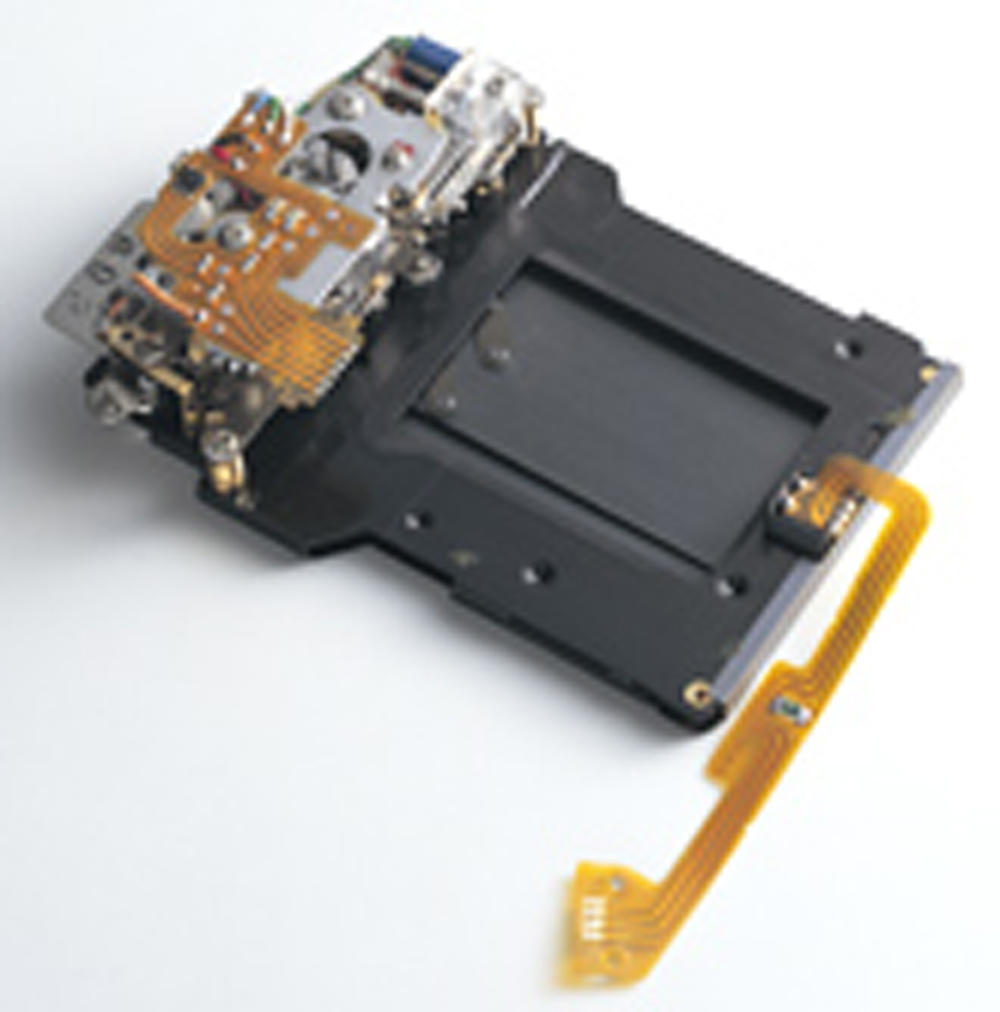
The primary reliability factor for professional-use cameras is precise actuation of the shutter. The F5 incorporated the newly developed "monitoring function integrated shutter." The optical sensor for the monitoring function checks the shutter each time the shutter release button is pressed, and automatically corrects any blurring, if detected. In addition, it locks the shutter release when detecting any unusual condition, and causes the external warning LED indicator to blink and the upper display panel to display the blinking "ERR" message. Furthermore, the shutter unit is designed to be durable enough to withstand as much as 150,000 cycles of operation owing to the shutter blade constructed with a combination of high-elasticity carbon fiber composite and aluminum materials to ensure higher mechanical strength without any increase in weight. The rear curtain is kept closed on standby until the time when the shutter release button is pressed, ensuring double shading with the leading curtain to prevent possible light leak during mirror-up.
5. Command dials, larger LCD panels, and easier-to-operate and more robust body
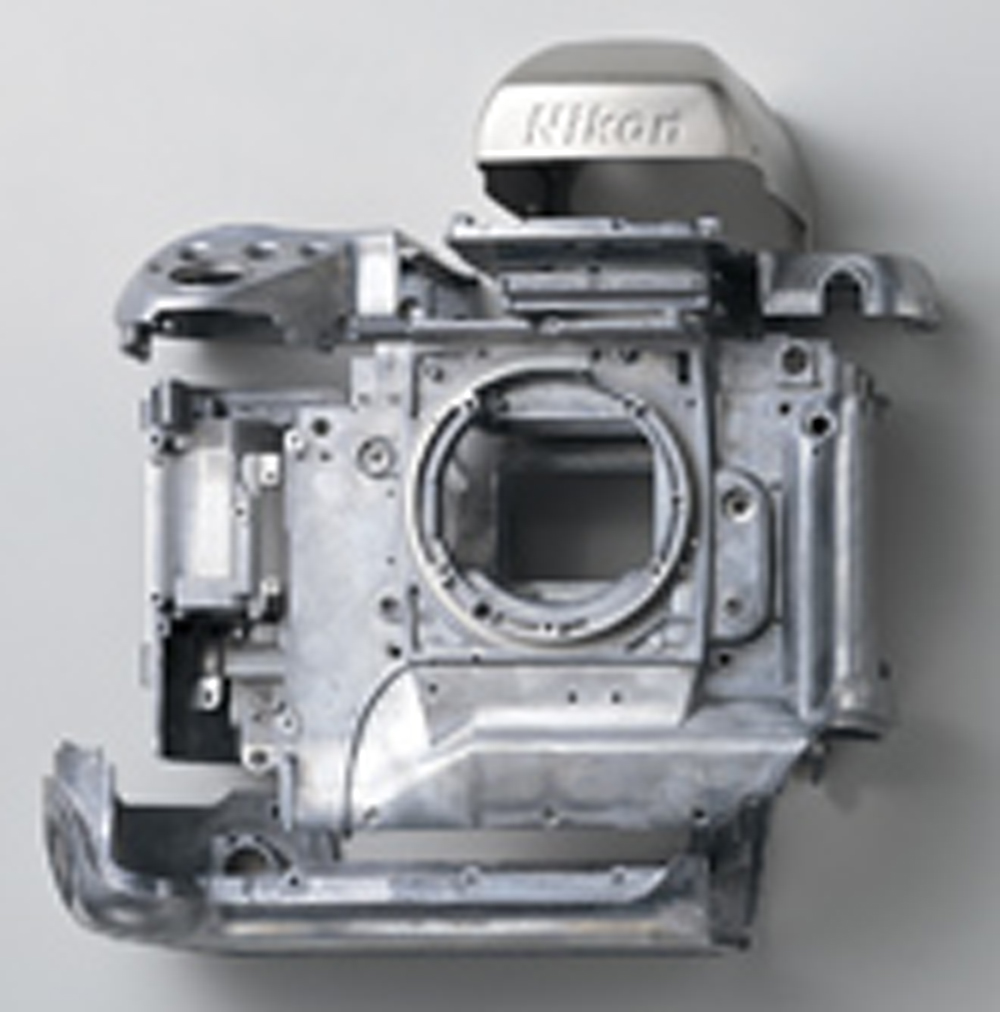
The predecessor F4 inherited the traditional dial and lever operation. However, the F5 using "Speed" as a keyword adopted the rotating dials and pad-like selectors to achieve higher operating speed, such as the focus area selector on the back of body and the command dials for setting the aperture and shutter speed.
The elegant design by Mr. Giorgetto Giugiaro makes it easy to hold the grip on the body without a feeling of heaviness, due to the convenient size and use of anti-slip material; the buttons and levers operate smoothly with a touch of the fingers, visibility and operability are improved due to larger display panels and command dials, and drip- and dust-proof provisions against rough weather conditions by sealing with O-rings and packing. In addition, the metallic body armored with die-cast aluminum at the top and bottom and at the front and back, and the titanium viewfinder cover contributes to maximize the reliability and robustness.
Furthermore, four options of the interchangeable viewfinder (Multi-Meter Finder DP-30 ‹standard equipped›, AE Action Finder DA-30, Waist-Level Finder DW-30, High-Magnification Finder DW-31), and 13 options of the interchangeable focusing screen were inherited. This high interchangeability ennobles F5 as a systematic camera.
As proof of the high quality of the camera, a three-year warranty was applied for the F5.

(From left, Multi-Meter Finder DP-30, AE Action Finder DA-30, High-Magnification Finder DW-31, and Waist-Level Finder DW-30)
6. Available custom setting for 24 functions and data exchange with PC
The F5 incorporates a custom setting function to allow the photographer to select his/her preferred options for comfortable shooting from a total of 24 options including the order of exposure compensation by Auto Exposure Bracketing (AEB), AF action in response to the lightly pressed shutter release button, and frame rate by film transport. In addition, two patterns A and B can be stored, which allows two persons to store their own preferred settings when they share one set of F5. Furthermore, the Nikon Photo Secretary for F5, a specially developed software helps increase the compatibility with PCs that are able to capture photography data and control cameras.
Nikon F5 Specifications
| Compatible lenses |
D-type AF Nikkor: All features can be used AF Nikkor other than D-type (excluding the lenses for F3AF): All features can be used except the 3D Color Matrix Metering and 3D Multi-Sensor Balanced Fill-Flash Ai-P Nikkor: All features can be used except the 3D Color Matrix Metering, 3D Multi-Sensor Balanced Full-Flash and Autofocus Ai-S, Ai, and Modified Ai Nikkor: [A] or [M] exposure mode ([P] or [S] will be automatically changed to [A].); Center-weighted or spot metering mode can be used (Matrix Metering will be automatically changed to center-weighted metering.); Focus Aid available with a maximum aperture of F5.6 or smaller TC-16AS: Can be used with a maximum aperture of F3.5 or smaller (AF available but Focus Aid not available); All features but AF may be used as equivalent to those available with Ai-S Nikkor. Lenses other than Ai: May be attached following body modification, by changing the exposure-meter-coupling lever to the retractable design (stop-down metering). |
|---|---|
| Viewfinder | Eyelevel Multi-Meter Finder DP-30 provided as standard equipment; Built-in diopter adjustment; Hot shoe and eyepiece shutter provided Interchangeable with AE Action Finder DA-30, Waist-Level Finder DW-30, and High-Magnification Finder DW-31 |
| Auto-focus area | Five selectable focus areas |
| AF area mode | Single Area AF and Dynamic AF modes selectable |
| Exposure metering | TTL exposure measurement at open aperture; Selectable Matrix Metering/Center-Weighted metering/Spot metering
|
| Shutter speed | 1/8,000 to 30 sec.; on [P] or [A] mode 1/8,000 to 30 sec. in 1/3 EV steps and X (1/250) on [S] mode 1/8,000 to 30 sec. in 1/3 EV steps, Bulb and X (1/250) on [M] mode |
| Flash sync. |
|
| Film advance | Selectable automatic advance with the built-in motor drive, S (single-frame), CL (Continuous Low), CH (Continuous High) or CS (Continuous Silent) shooting mode. Shooting speed (average per 36-exposure roll with Continuous AF Servo (C )), at 1/250 or higher speeds) S: Single-frame advance CH: High-speed continuous advance Approx. 8.0 fps (using Ni-MH Battery Unit MN-30) Approx. 7.4 fps (using AA-size alkaline or Lithium batteries) CL: Low-speed continuous advance Approx. 3 fps (using Ni-MH Battery Unit MN-30) Approx. 3 fps (using AA-size alkaline or Lithium batteries) CS: Silent continuous advance Approx. 1 fps (using Ni-MH Battery Unit MN-30) Approx. 1 fps (using AA-size alkaline or Lithium batteries) |
| Film rewind | Automatic rewind with the built-in motor drive (using the film rewind button R1 and lever R2) Selectable manual rewind Film rewind time (per 36-exposure roll): Approx. 4 sec. (with Ni-MH battery unit MN-30) / Approx. 6 sec. (with AA-size alkaline or Lithium batteries) |
| Power source | AA-size battery holder MS-30 provided as standard (Eight alkaline batteries or Lithium batteries); Optionally available Ni-MH battery unit MN-30 (separately sold) |
| Custom setting | Available custom setting in the body: A total of 24 items |
| Dimensions (W x H x D) | Approx. 158 mm x 149 x 79 mm |
| Weight | Approx. 1,210 g (Body alone, without the batteries) |
Responses to F5

The year 1996, when the release of F5 was announced in June, was the year of the Olympic Games in Atlanta, U.S. In August, when the opening ceremony of the Olympic Games was held, the final pre-production model F5 was supplied to Atlanta for demonstration. The F5 was well received there for the highly durable design of the metallic body, the capability of the AF to follow rapidly moving subjects, the crisp shutter releasing action and other features, which demonstrated to the target users that the design philosophy was right. With a number of the then most up-to-date capabilities, F5 caused the renewal of equipment and materials of news photographers both at home in Japan and abroad, when it appeared on the market.
Although the F5, developed for professional use, drew comments from some advanced amateurs that it was heavy and/or too large. But it was highly regarded on the whole as a high-performance camera for being easy to grip and causing no feeling of heavy weight, and for ease of operation. However, following the introduction of digital SLR camera D1 to the market in 1999, half of the cameras in the Sydney Olympic Games in 2000 were digital, and almost all the cameras in the Athens Olympic Games in 2004 shifted to digital. The F5 then lost ground to the digital cameras on the rise in the camera market.
50th Anniversary Model of Nikon F5
In 1998, two years after the introduction of F5, we at Nikon marked the 50th anniversary of our camera production from the first release of Nikon I in 1948. In commemoration of this, we decided to offer the 50th Anniversary Model, which was designed based on the F5 with changes in the color of the upper body cover and body cap to a sober dark silver color, and the rubber of the oval section of the grip to a dark gray, adding a quality appearance to the camera. On the front of the viewfinder was inscribed the same Nikon logo as adopted in Nikon I, and the back of body was marked with the former company marking of Nippon Kogaku K.K. and the marking for 50th Anniversary of Nikon Camera. This was the only variation model of F5.
In June 1998, the 50th Anniversary Model Nikon F5 (with a special wide strap for the anniversary model) went on sale in a limited quantity of 2,000 (3,000 in total including those on the foreign markets) at a domestic price of 340,000 yen (consumption tax excluded).
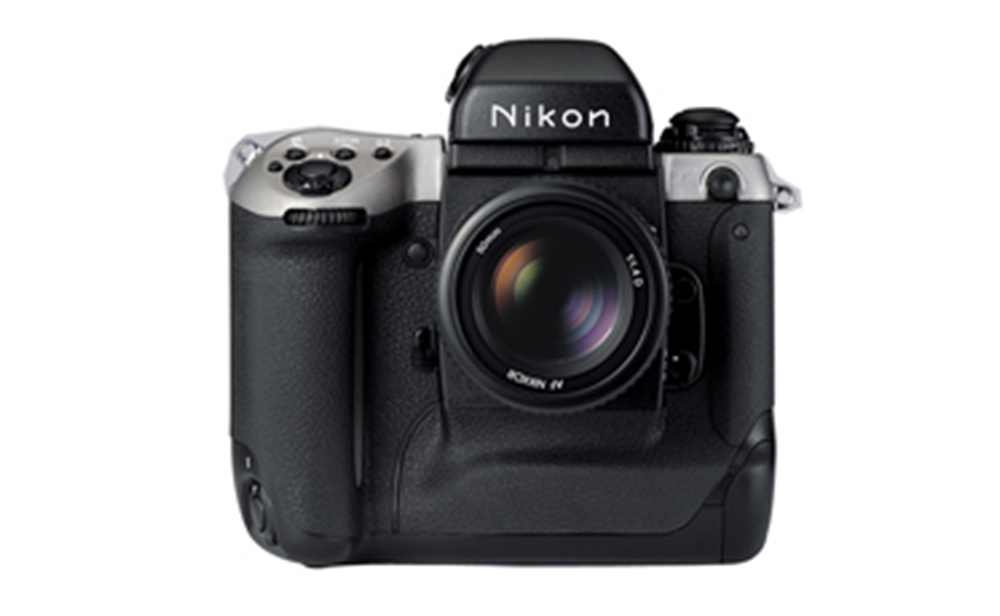

Carried into space by the NASA space shuttles

As with a succession of single-digit F-series models, the F5 was also adopted in the space shuttle programs and carried into space by the NASA space shuttles including Discovery, and was in service as of 2005 as an official extravehicular activity (EVA) recording equipment. The F5 filled the exacting requirements of NASA only with the exception of a change in lubricants, which demonstrates that F5 had nearly reached perfection and ultimate durability. In addition, the body was supplied outside the company, and Eastman Kodak adopted it as the body for their digital cameras.
Awards granted to F5
The F5 has received a number of awards including those listed below.
| February 1997 | The British magazine Amateur Photographer (AP)'s Camera of the Year 1997 and 35 mm SLR & Medium Format Camera of the Year |
|---|---|
| June 1997 | Camera Grand Prix 1997 Award (Japan) |
| August 1997 | EISA (European Imaging and Sound Association) European Camera of the Year '97-'98 |
| TIPA (Technical Image Press Association) The Best SLR Camera '97-'98 |
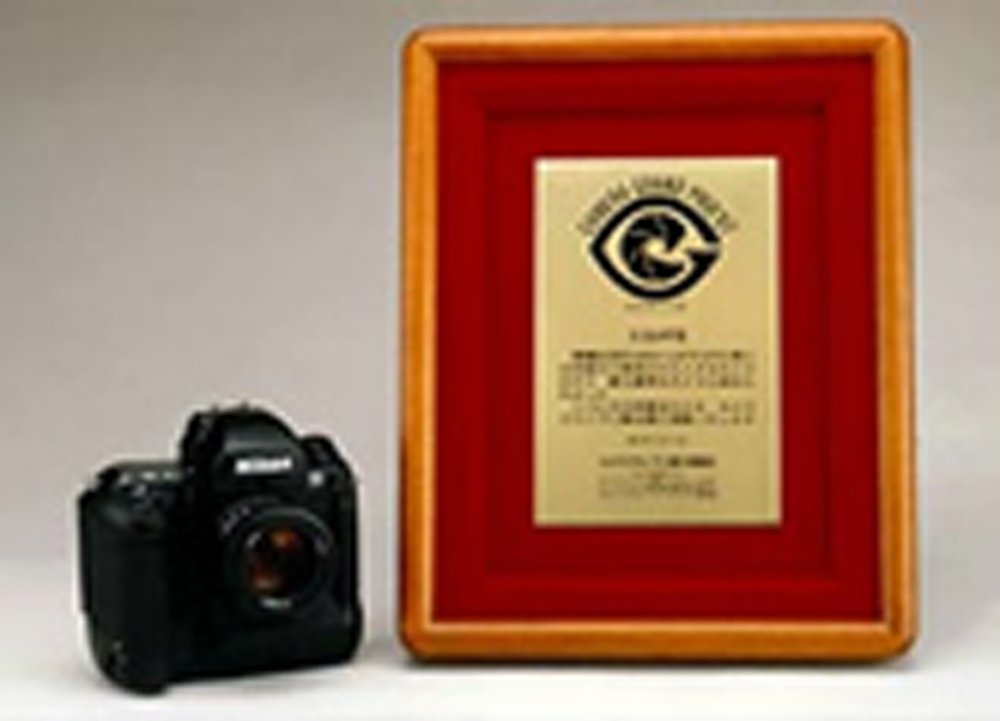
Camera Chronicle
Archives of corporate history subject matter related to Nikon cameras, including rare materials, as well as product photos of cameras and lenses.
